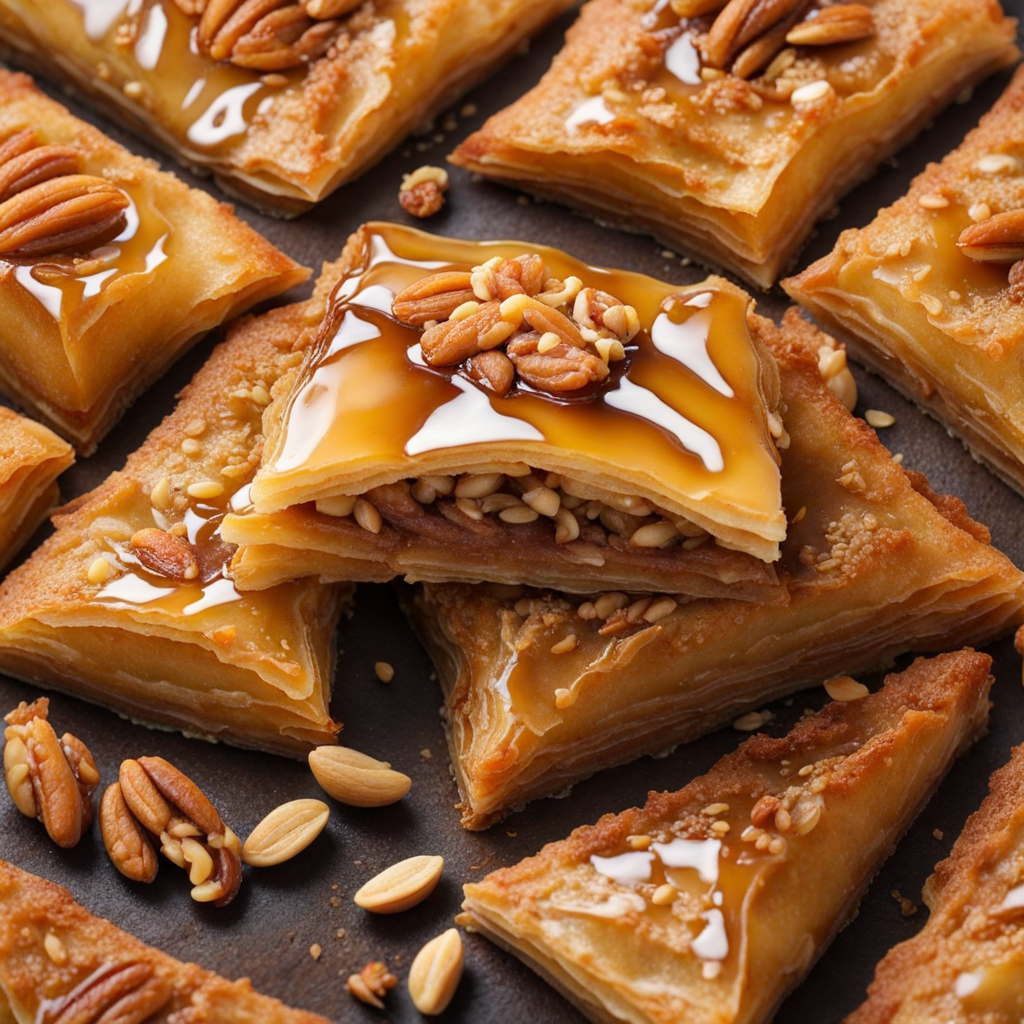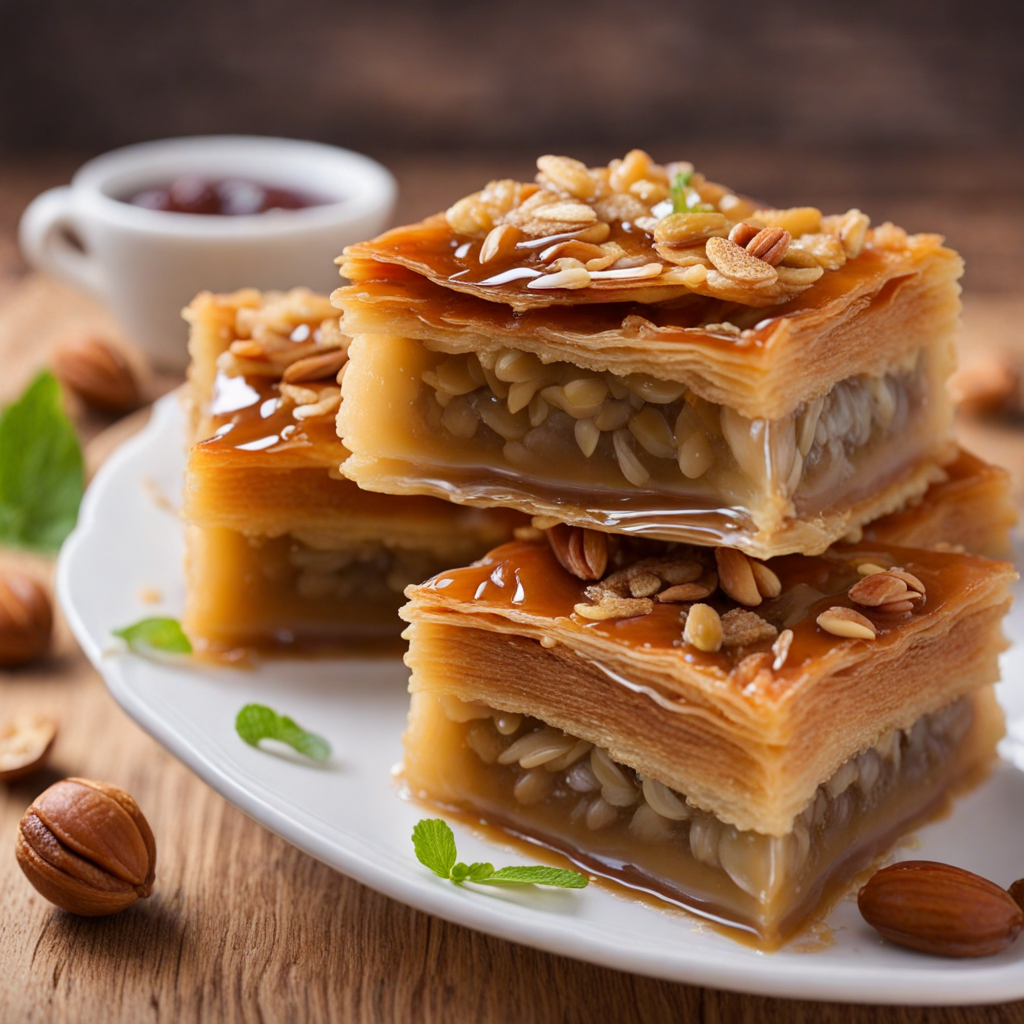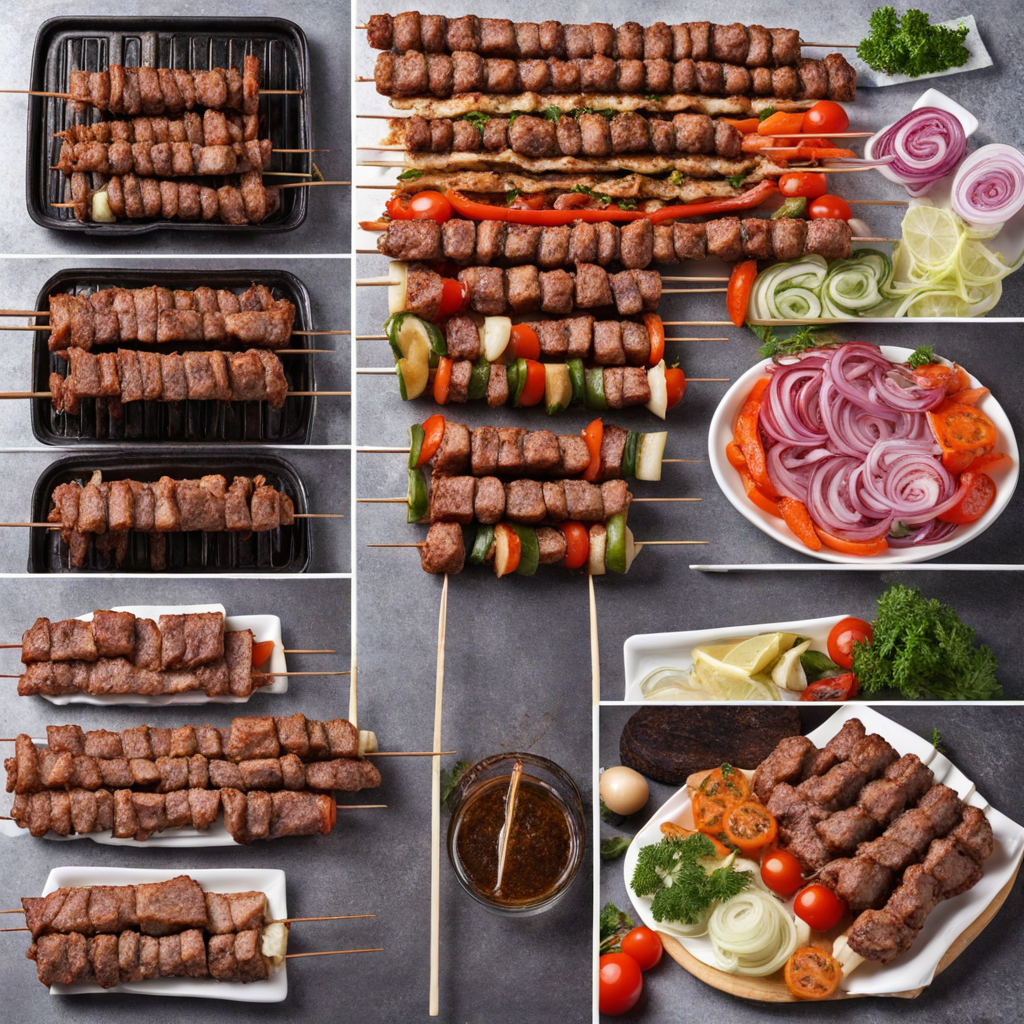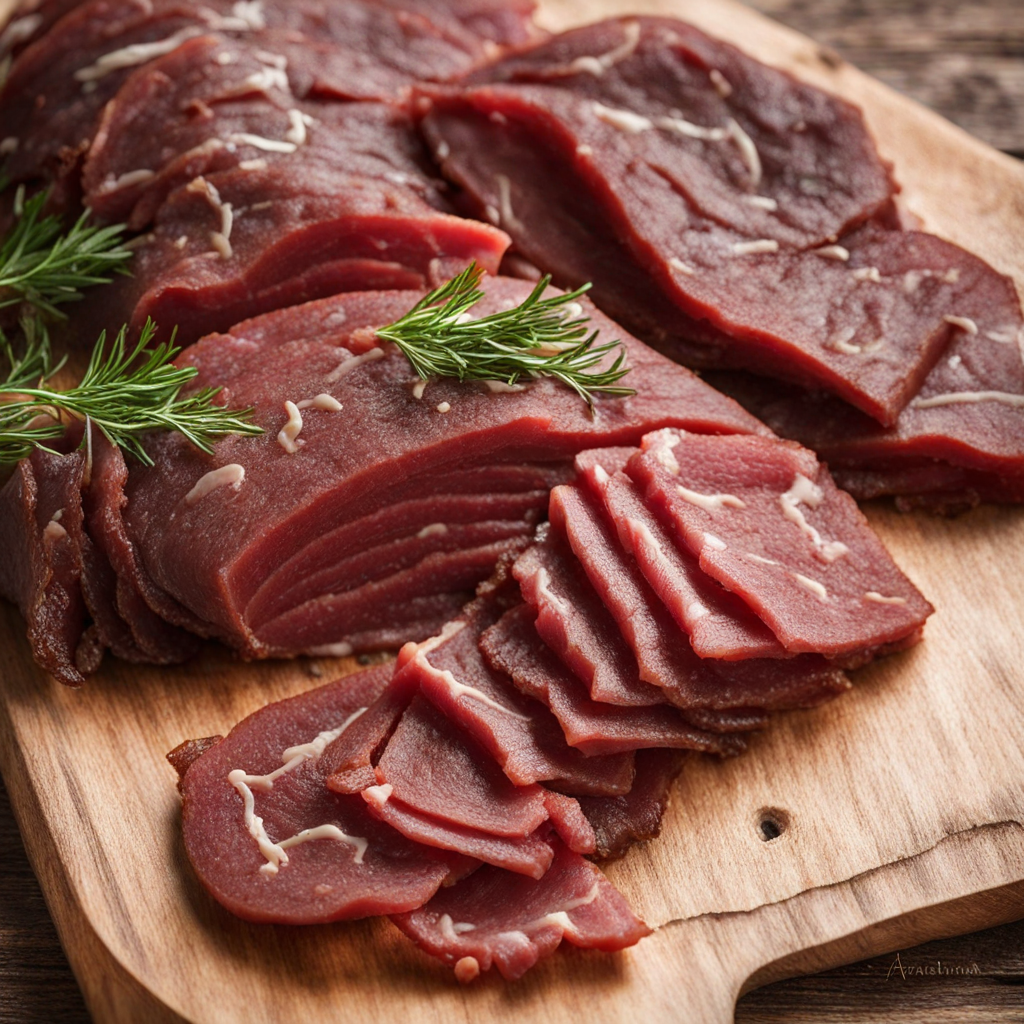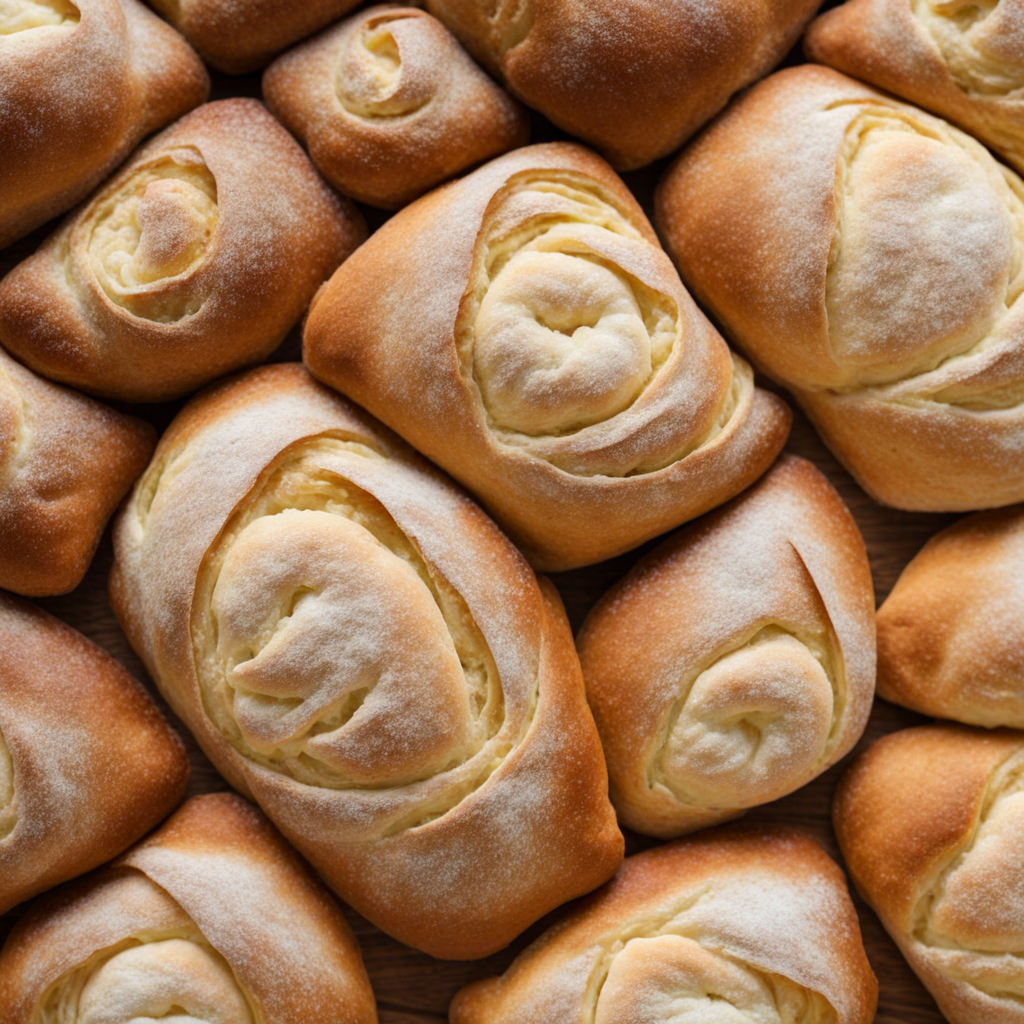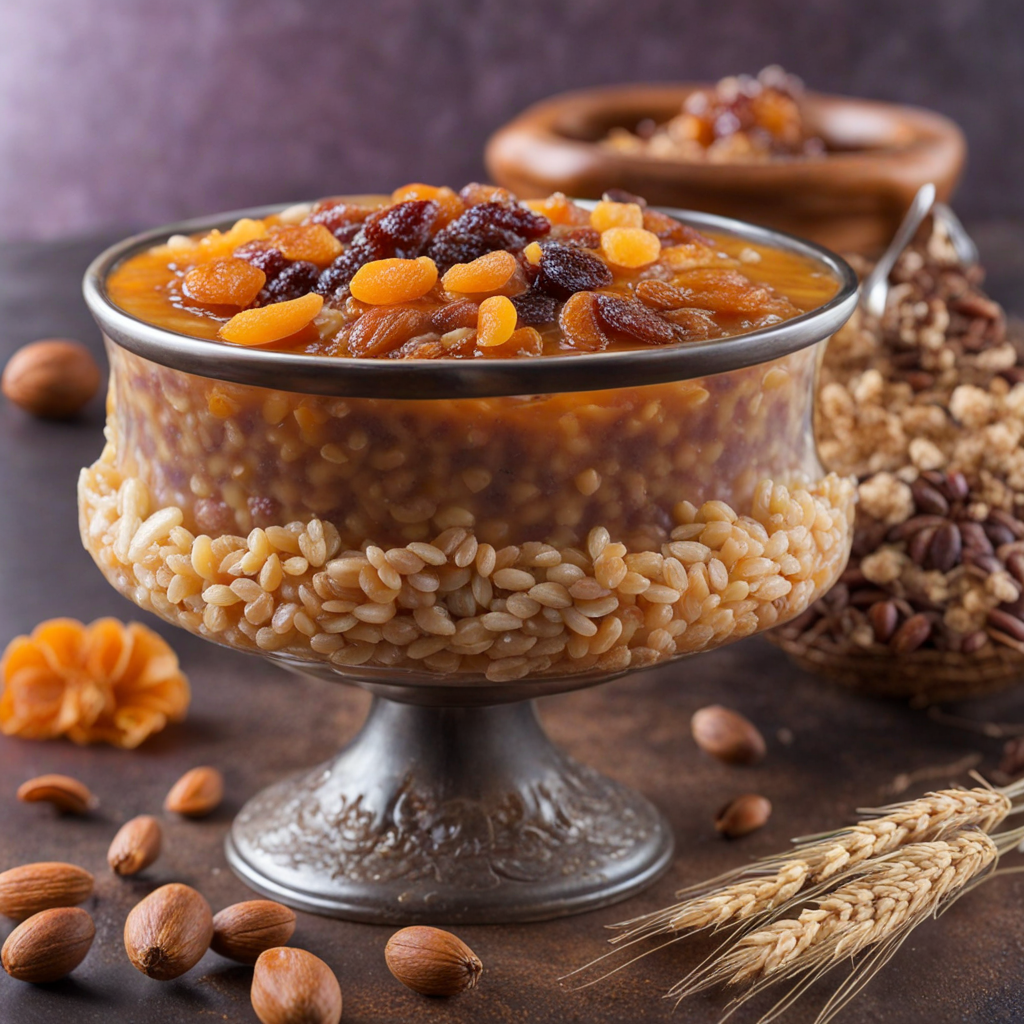Pakhlava
Փախլավա, or baklava as it is more widely known, is a traditional Armenian pastry that has captivated taste buds for centuries. This exquisite dessert is characterized by its rich layers of phyllo dough, filled with a mixture of finely chopped nuts, and sweetened with syrup or honey. The Armenian version of baklava stands out due to its unique combination of spices and flavors, reflecting the country's rich culinary heritage. The history of baklava is steeped in tradition, with its origins tracing back to the Middle East and the Mediterranean region. Although it has been adopted by various cultures, each region has developed its own distinct version. In Armenia, baklava is often associated with celebrations and special occasions, such as weddings and holidays, symbolizing joy and hospitality. The preparation of this delicacy has been passed down through generations, with each family often having its own secret recipe that adds to the dish's allure. The flavor profile of Armenian baklava is a delightful harmony of sweetness and nuttiness. The layers of phyllo dough are light and flaky, providing a satisfying contrast to the dense filling of nuts, predominantly walnuts or pistachios. The addition of spices, such as cinnamon and cardamom, infuses the dessert with warmth and depth, elevating it beyond a mere sweet treat. The final touch is the syrup, typically made from sugar, water, and lemon juice, which is poured over the baklava after baking, allowing it to soak in and enhance the flavors
How It Became This Dish
Origins of Пахлава The history of Փախլավա (Baklava) in Armenia is steeped in rich traditions and cultural exchanges that span centuries. While the exact origins of Baklava are contested, many food historians believe it has roots that can be traced back to ancient civilizations in the Near East, particularly the Assyrians and the Greeks. The earliest documented recipes for layered pastries filled with nuts and sweeteners can be found in ancient texts, leading to the belief that this beloved dessert evolved through various cultures over time. In Armenia, the earliest forms of Baklava were likely made using simple ingredients like flour, nuts, and honey. The Armenian version of baklava, which has a slightly different texture and flavor compared to its Middle Eastern counterparts, showcases local ingredients like walnuts, pistachios, and honey. The use of local nuts and the incorporation of spices unique to Armenian cuisine reflect the adaptation of the dish to regional tastes and agricultural practices. \n\n Cultural Significance Baklava holds a significant place in Armenian culture and is often associated with celebrations and special occasions. It is traditionally served during festive events such as weddings, religious holidays, and family gatherings. The preparation of Baklava is often a communal activity, with families coming together to create this intricate dessert. The making of Baklava is not just about food; it is a ritual that fosters family bonds and community spirit. In Armenian culture, the act of sharing Baklava symbolizes hospitality and generosity. When guests are welcomed into a home, offering them Baklava is a customary gesture that signifies respect and goodwill. The rich flavors and the meticulous process of layering the dough, filling, and syrup reflect the care and effort taken in Armenian hospitality. This makes Baklava not merely a dessert but a representation of cultural identity and values. \n\n Development Over Time The evolution of Baklava in Armenia can be traced through various historical events and influences. During the medieval period, the Armenian Kingdom of Cilicia became a melting pot of cultures, resulting in culinary exchanges with neighboring regions. As trade routes expanded, especially during the Ottoman Empire, Baklava gained prominence and became a symbol of luxury and indulgence. The Ottoman influence on Armenian cuisine further shaped the preparation and presentation of Baklava. The introduction of spices like cinnamon and cloves added depth to the flavor profile of the dessert. Over time, different regions of Armenia began to develop their own unique variations of Baklava, each boasting distinct ingredients and preparation methods. For instance, some regions might use almonds or hazelnuts as a filling, while others might prefer the sweetness of dried fruits. \n\n Regional Variations Within Armenia, Baklava has several regional variations that showcase the diversity of local ingredients and culinary traditions. For example, in Western Armenia, a version known as Ghapama incorporates pumpkin, rice, and dried fruits, creating a unique twist on the traditional dessert. In contrast, Eastern Armenian Baklava often emphasizes the use of walnuts and honey, resulting in a denser texture and a rich, sweet flavor. Another popular variation is Bakhlava, which features a thinner dough and a more delicate layering process. This version often includes a generous drizzle of syrup made from pomegranate juice, offering a tangy contrast to the sweetness of the nuts. These regional differences reflect the adaptability of Baklava as it continues to evolve while remaining a beloved staple in Armenian cuisine. \n\n Modern-Day Baklava In contemporary Armenia, Baklava has transcended its traditional boundaries and has become a popular treat enjoyed by people of all ages. With the rise of globalization and the influence of culinary tourism, Armenian Baklava has garnered international recognition. Armenian restaurants and bakeries around the world proudly feature this dessert on their menus, introducing it to new audiences and encouraging cross-cultural appreciation. Modern adaptations of Baklava also reflect contemporary tastes and dietary preferences. Innovations include gluten-free versions made with alternative flours and vegan options that replace butter with plant-based fats. These adaptations ensure that Baklava remains relevant in today's culinary landscape while preserving its cultural roots. \n\n Conclusion: A Culinary Heritage Baklava, or Փախլավա, is more than just a delectable dessert; it is a culinary heritage that encapsulates the history, culture, and traditions of Armenia. From its ancient origins to its modern interpretations, Baklava continues to be a symbol of Armenian hospitality, creativity, and resilience. As families gather to prepare and share this beloved treat, they are not only passing down a recipe but also a rich tapestry of stories and memories that bind generations together. In every bite of Baklava, one can taste the history of a nation, making it an enduring emblem of Armenian identity.
You may like
Discover local flavors from Armenia


